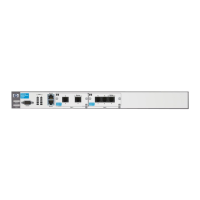7-29
ADSL WAN Connections
PPPoE Overview
Table 7-6. Additional Configurations for the ATM Interface or Subinterface
PPPoE Overview
Your service provider may use PPPoE for several reasons:
■ Each host can use its own protocol stack, enabling each user to continue
using a familiar interface.
■ The service provider can control access, track usage, provide services,
and bill for usage on a per-user basis, rather than on a per-site basis.
■ The service provider can use PPP authentication to ensure that the hosts
requesting access to network services are authorized to use those
services.
If an individual user is using ADSL with PPPoE to connect from his or her
home to the service provider, that user must load a PPPoE client on his
workstation. For a company environment, the PPPoE client is frequently
configured on the router establishing the ADSL connection. In this case, the
users on the company’s LAN do not have to run a PPPoE client on their
workstation.
To implement PPPoE, the service provider must set up an access concentrator,
or access server. This access concentrator negotiates the PPPoE session with
the client—which is, in this case, the ProCurve Secure Router. (See Figure 7-8.)
Settings Apply to ATM Interface or
Subinterface
Configuration Guide Page
access controls to filter incoming and outgoing
traffic
ATM subinterface Advanced 5-19, 5-38
bridging ATM subinterface Basic 10-6
VPNs ATM subinterface Advanced 10-46
routing commands for OSPF, RIP, or BGP ATM subinterface Advanced 15-1
quality of service settings ATM interface Advanced 8-28

